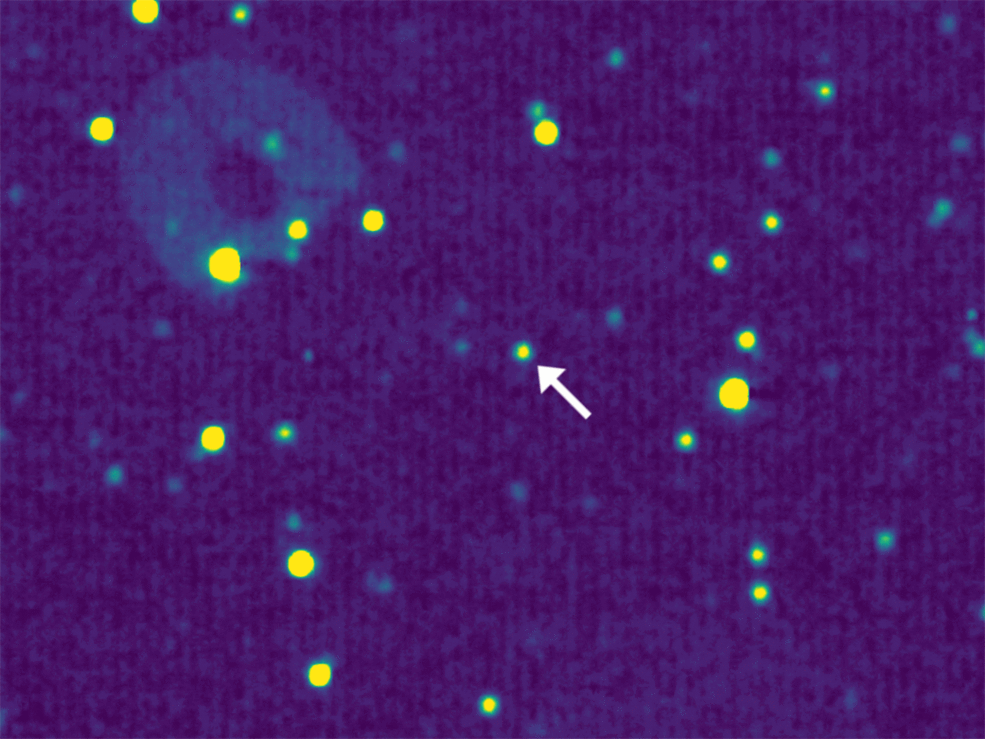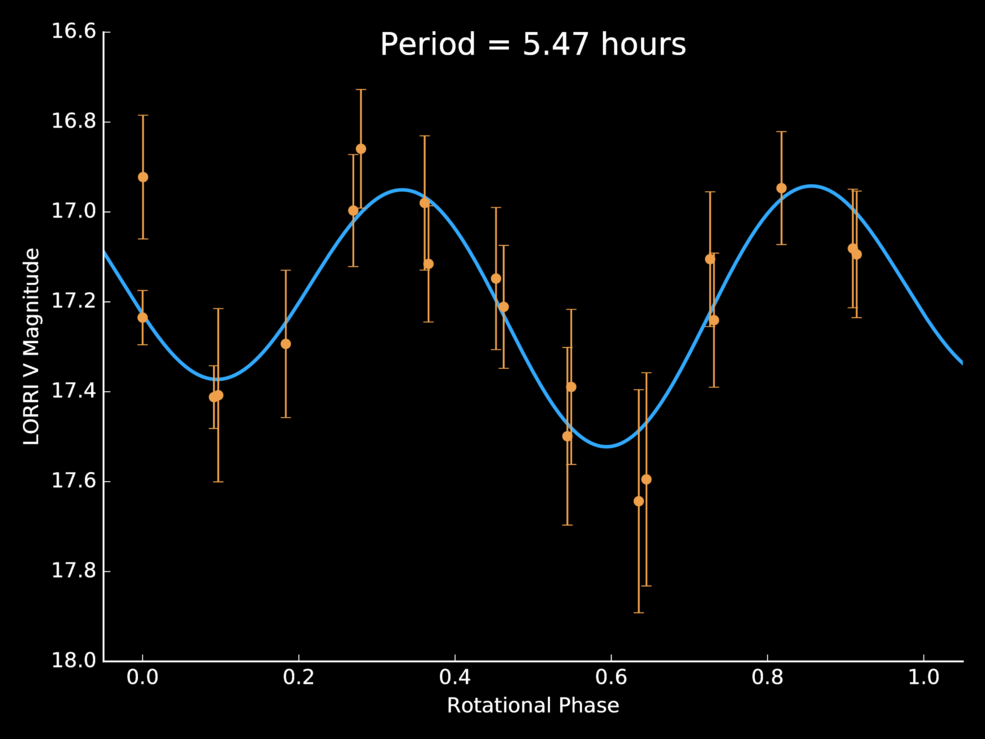Beyond Pluto, New Horizons Studies Distant Icy Object

As NASA's New Horizons probe speeds toward a possible encounter with an object beyond the orbit of Pluto, the spacecraft has made observations of another icy object located in the same outer region of the solar system.
New Horizons finished its close encounter with Pluto last July and since then has completed two sets of observations on an object in the Kuiper Belt, the band of objects beyond the orbit of Neptune. The icy body is known as 1994 JR1 and orbits about 32 astronomical units away from the sun (an astronomical unit is the distance from the Earth to the sun). New Horizons' view of the faint, icy body can be seen in this video from Space.com.
The observations put a stop to the hypothesis that JR1 may be a satellite of Pluto, New Horizons science team member Simon Porter said in a statement from NASA. [See More Pluto Photos by NASA's New Horizons]
"Combining the November 2015 and April 2016 observations allows us to pinpoint the location of JR1 to within 1,000 kilometers (about 600 miles), far better than any small [Kuiper Belt object]," said Porter, a postdoctoral planetary scientist at the Southwest Research Institute in Colorado.
The team also figured out how fast the 90-mile-wide (150 km) object is rotating, using observations taken in April. Changes in light reflected off of JR1's surface showed that the object rotates once every 5.4 hours, which is considered relatively quick for a KBO.
These observations will serve as practice for the possible 20 other objects New Horizons can see in the Kuiper Belt through its extended mission. If the New Horizons extended mission receives approval from NASA, the probe will do close-up observations of 2014 MU69 on Jan. 1, 2019.
Get the Space.com Newsletter
Breaking space news, the latest updates on rocket launches, skywatching events and more!
New atmospheric insights
Meanwhile, researchers continue to analyze data from last year's Pluto encounter. Team members now have new insights into the dwarf planet's tenuous atmosphere after looking at starlight passing through the wispy gas, according to the NASA statement.
Roughly four hours after New Horizons made its closest approach to Pluto, on July 14, the spacecraft's ultraviolet spectrometer instrument looked at two stars moving behind Pluto and its atmosphere (astronomers call this a stellar occultation).

"The light from each star dimmed as it moved through deeper layers of Pluto’s atmosphere, absorbed by various gases and hazes," NASA wrote in a second press release.
The spectrometer confirmed previous measurements from New Horizons showing that Pluto's upper atmosphere is up to 25 percent colder (and thus more compact) than what scientists expected before New Horizons flew by. The instrument also confirmed a calculation that nitrogen molecules escape the dwarf planet's atmosphere at a rate of about 1,000 times lower than expected.
Stellar occultations of 1994 JR1 were also performed using light from the sun. This allowed New Horizons to confirm the atmospheric temperature and structure, measure the escape rate of nitrogen molecules from the atmosphere, and detect the presence of various gases (including nitrogen, methane and acetylene).
Follow Elizabeth Howell @howellspace. Follow us @Spacedotcom, Facebook and Google+. Original article on Space.com.
Join our Space Forums to keep talking space on the latest missions, night sky and more! And if you have a news tip, correction or comment, let us know at: community@space.com.

Elizabeth Howell (she/her), Ph.D., was a staff writer in the spaceflight channel between 2022 and 2024 specializing in Canadian space news. She was contributing writer for Space.com for 10 years from 2012 to 2024. Elizabeth's reporting includes multiple exclusives with the White House, leading world coverage about a lost-and-found space tomato on the International Space Station, witnessing five human spaceflight launches on two continents, flying parabolic, working inside a spacesuit, and participating in a simulated Mars mission. Her latest book, "Why Am I Taller?" (ECW Press, 2022) is co-written with astronaut Dave Williams.
